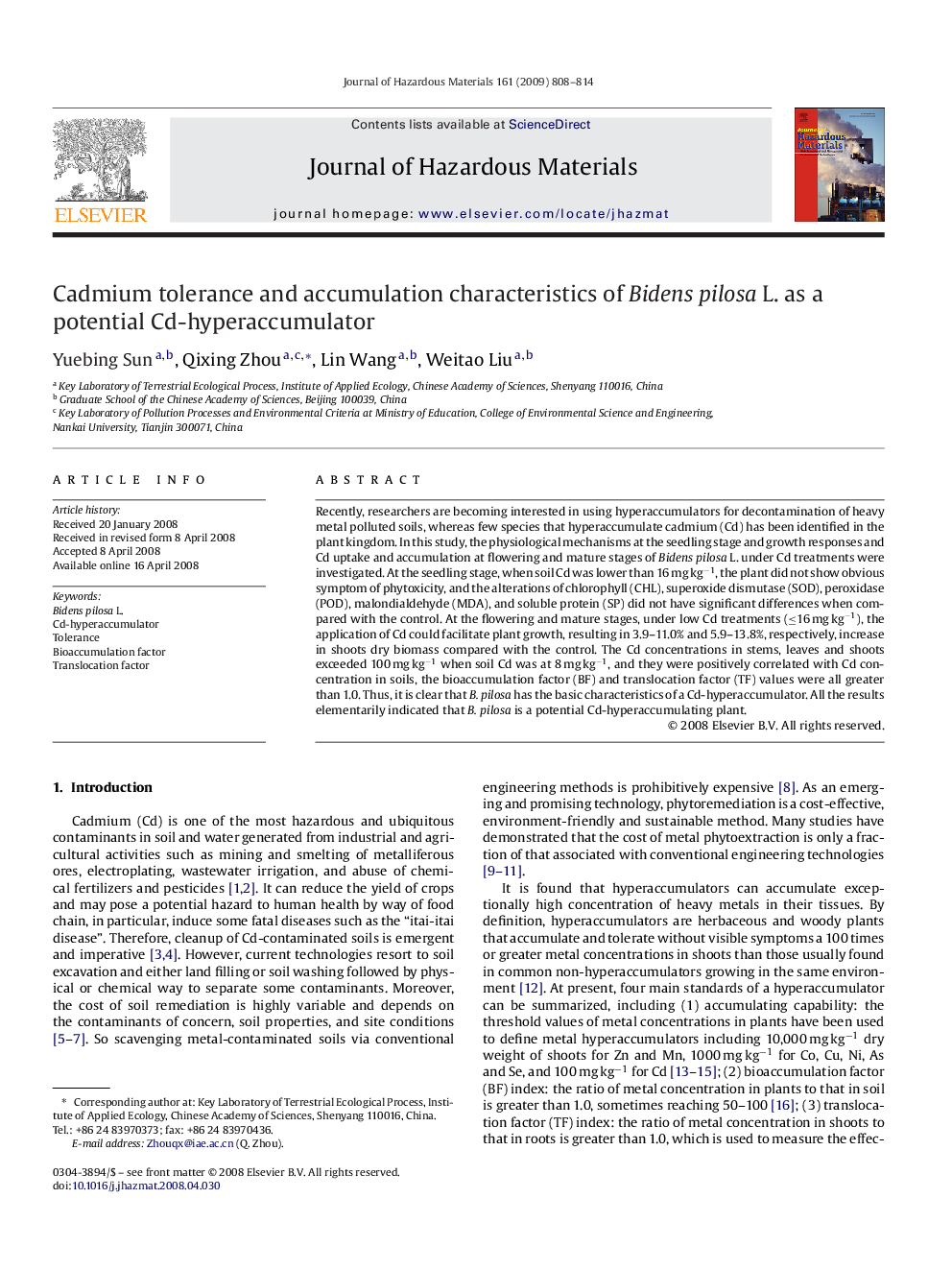| Article ID | Journal | Published Year | Pages | File Type |
|---|---|---|---|---|
| 582639 | Journal of Hazardous Materials | 2009 | 7 Pages |
Abstract
Recently, researchers are becoming interested in using hyperaccumulators for decontamination of heavy metal polluted soils, whereas few species that hyperaccumulate cadmium (Cd) has been identified in the plant kingdom. In this study, the physiological mechanisms at the seedling stage and growth responses and Cd uptake and accumulation at flowering and mature stages of Bidens pilosa L. under Cd treatments were investigated. At the seedling stage, when soil Cd was lower than 16 mg kgâ1, the plant did not show obvious symptom of phytoxicity, and the alterations of chlorophyll (CHL), superoxide dismutase (SOD), peroxidase (POD), malondialdehyde (MDA), and soluble protein (SP) did not have significant differences when compared with the control. At the flowering and mature stages, under low Cd treatments (â¤16 mg kgâ1), the application of Cd could facilitate plant growth, resulting in 3.9-11.0% and 5.9-13.8%, respectively, increase in shoots dry biomass compared with the control. The Cd concentrations in stems, leaves and shoots exceeded 100 mg kgâ1 when soil Cd was at 8 mg kgâ1, and they were positively correlated with Cd concentration in soils, the bioaccumulation factor (BF) and translocation factor (TF) values were all greater than 1.0. Thus, it is clear that B. pilosa has the basic characteristics of a Cd-hyperaccumulator. All the results elementarily indicated that B. pilosa is a potential Cd-hyperaccumulating plant.
Related Topics
Physical Sciences and Engineering
Chemical Engineering
Chemical Health and Safety
Authors
Yuebing Sun, Qixing Zhou, Lin Wang, Weitao Liu,
